Repair help
Why Your Washer Isn't Draining and What to Do
AZparts Team
Updated on June 24, 2025
7 min read
A washer that won’t drain water can be a sign of an underlying problem with your appliance. If you’re standing in front of a machine full of water, don’t panic. In this guide, AZParts will help you explore the most common causes behind washer drain malfunctions, explain the role of the drainage system, and show you how to fix the issue with reliable washer replacement parts, either manually or through step-by-step troubleshooting.

1. Common Reasons for a Washing Machine Not Draining Properly
Before diving into repairs, always start by checking your washing machine’s user manual. Most models include a dedicated troubleshooting section that can help pinpoint drainage issues. Some machines will even display an error code, which can guide you toward the exact cause of the problem.
To help you get started, we’ve outlined some of the most common reasons why a washing machine won’t drain properly:
Clogged Drain Filter
The most frequent culprit behind drainage issues is a blocked filter. Designed to catch solid objects like coins, hairpins, or buttons, the filter can gradually accumulate lint, paper debris, and hair. Over time, this buildup restricts water flow and prevents your washer from draining fully.
💡 Tip: Cleaning the drain filter regularly—ideally every few weeks—can help prevent this issue and extend the life of your washer.
Blocked or Kinked Drain Hose
If debris slips past the filter, it can lodge inside the drain hose, causing a backup. Alternatively, the hose may become kinked or bent, especially if the machine has been moved recently or items are pressing against it. A restricted hose can significantly reduce water flow and lead to standing water after a cycle.
Internal Mechanical Failures
While clogs are often easy to fix at home, mechanical failures will require professional attention. Several key components play a role in draining your washer, including:
- Drain Pump – Responsible for pushing water out of the drum
- Drive Belt – Transfers power to the pump and motor
- Door or Lid Switch – Ensures the washer knows when it’s securely closed (some models won’t drain unless this is engaged)
If one of these parts fails, your washer may not drain even if there are no visible blockages. In such cases, replacing the defective component is usually the most effective solution.
Check out more: Washing machine belt repair cost
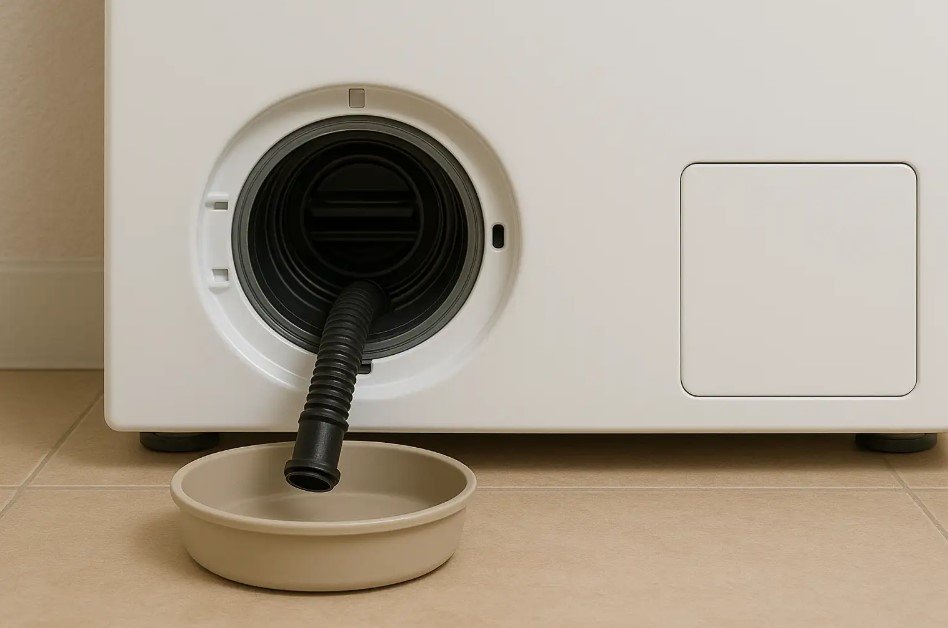
Washing machine drainage system (Source: AZParts)
2. How to fix a washing machine that’s not draining water
Dealing with a washing machine not draining issues can be frustrating, but don’t worry as many problems can be solved with a bit of hands-on work. This step-by-step washing machine drain fix guide will help you perform a safe and effective troubleshooting washer drainage process right at home.
Step 1: Safety first! Unplug the washing machine
Before beginning any troubleshooting washer drainage work, make sure your machine is completely unplugged from the power outlet - or shut off the circuit breaker if it's hardwired. Water and electricity can be a dangerous mix, so never skip this critical first step.
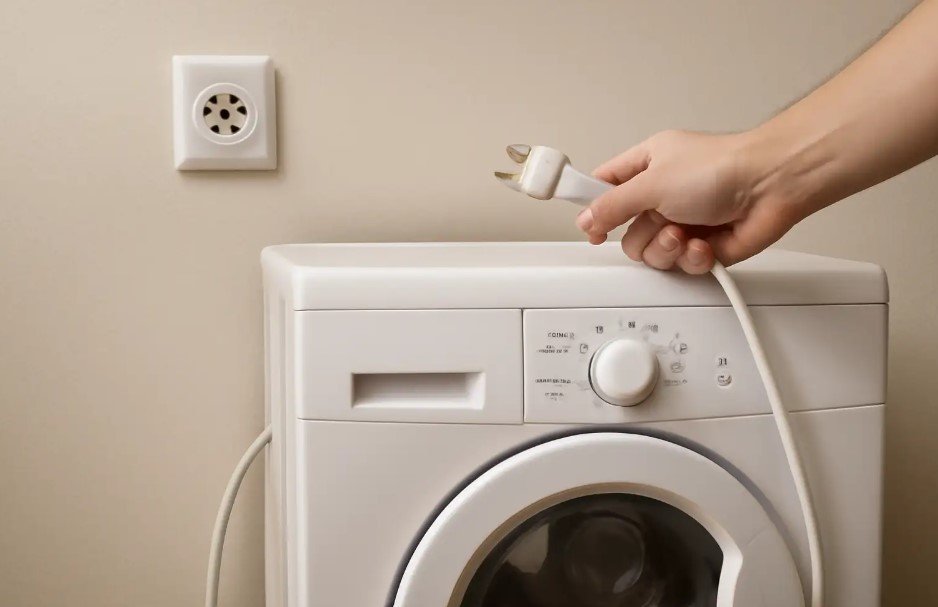
You should carefully unplug the washing machine before checking (Source: AZParts)
Step 2: Check the drain hose for kinks or obstructions
The drain hose is a common source of washer not draining problems. You have to carefully inspect it from end to end for sharp bends or kinks that could be obstructing water flow. You straighten the hose and look for external pressure points or debris blocking the connection to the drainpipe or standpipe.
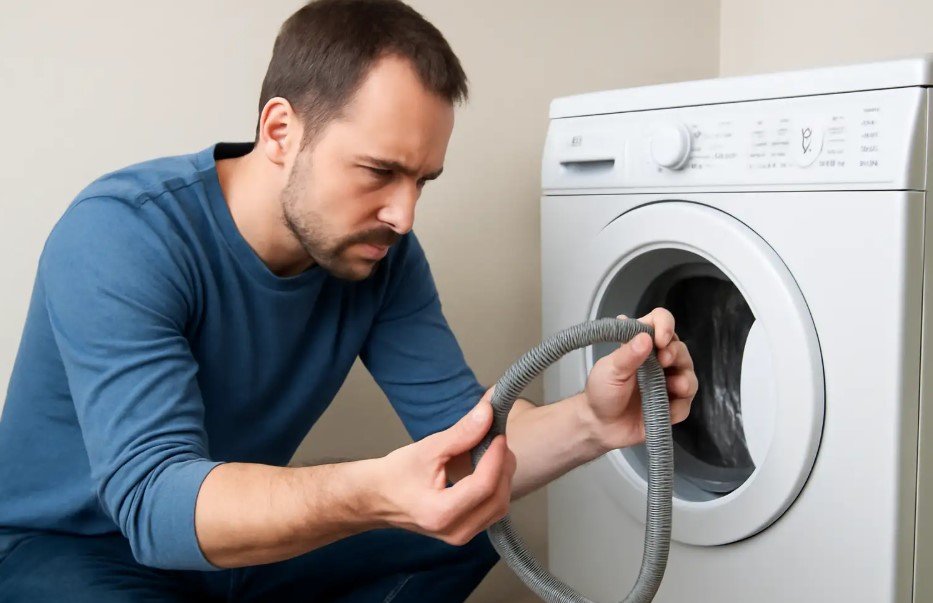
You have to carefully inspect drain hose from end to end for sharp bends or kinks (Source: AZParts)
Step 3: Examine the drainpipe or standpipe
If your washer empties into a standpipe, you need to make sure the hose isn’t inserted too far as this can create a siphoning effect that prevents proper drainage. You are required to look inside the pipe for debris like lint or socks that may be blocking the flow and carefully remove visible clogs using a wire hanger or long tweezers.
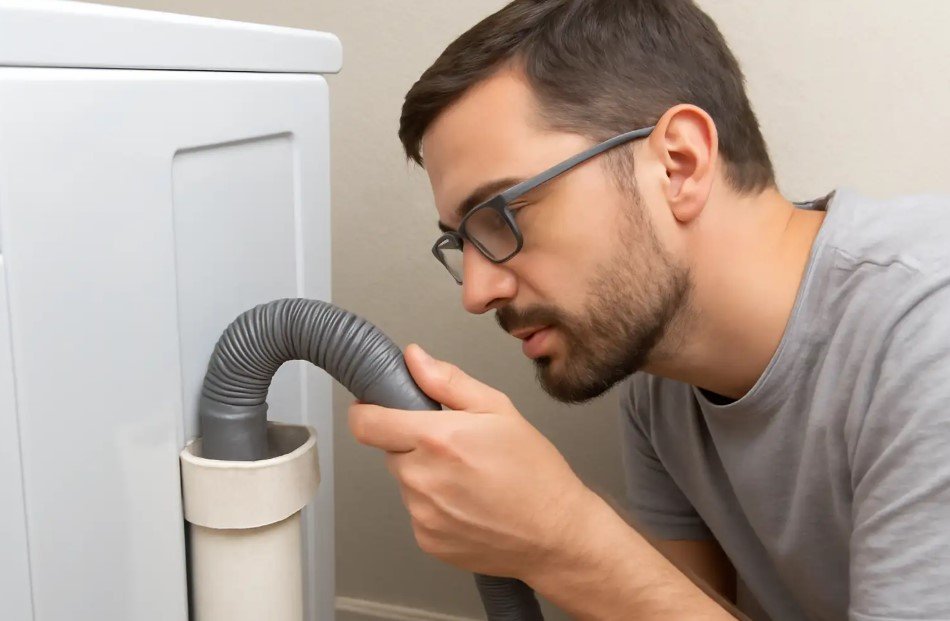
You examine the drainpipe or standpipe (Source: AZParts)
Step 4: Clean the washing machine's filter
A clogged filter is a frequent cause of washing machine pump troubleshooting. You will locate the filter, typically behind a small front panel near the bottom of the machine, and place a towel or pan underneath to catch any leaking water. Then, you unscrew and remove the filter and rinse it thoroughly to clear lint, hair, coins, or other debris, using a toothbrush for stubborn grime. Reinstall it securely before proceeding.
Step 5: Inspect the drain pump (If You're Comfortable)
If you're confident in DIY repairs, examine the pump itself for washing machine drainage mechanism issues. It’s usually located near the filter. After removing the filter, look inside the cavity for obstructions. If you see foreign objects around the impeller, carefully remove them using needle-nose pliers, taking care not to damage the blades.
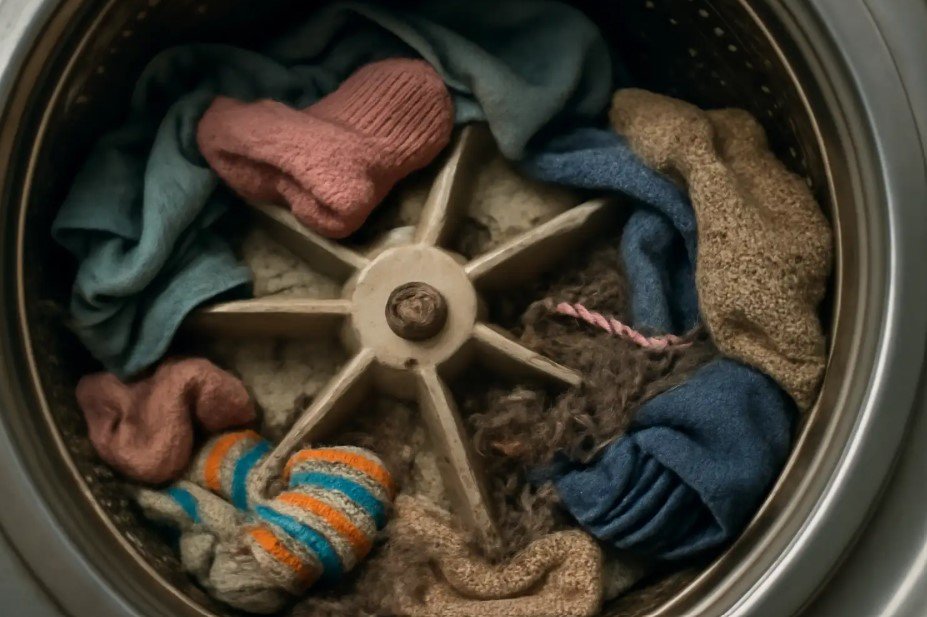
You remove the filter and see foreign objects around the impeller inside the cavity (Source: AZParts)
Step 6: Check the Drain Hose Connection to the Machine
Disconnect the drain hose from the back of the washer. Be prepared for water to spill out. Then, inspect the washer’s outlet port where the hose connects—sometimes small clogs or debris hide here and cause washing machine water removal problems.
Step 7: Run a Test Cycle
After reassembling everything, plug the washer back in. Run a short "Drain and Spin" cycle and observe whether the machine drains correctly. This test helps confirm whether your cleaning and adjustments resolved the issue.
Step 8: What to Do If It Still Doesn’t Drain
If you've followed every step and the machine still won’t drain, you may be facing a deeper drainage system malfunction in washers such as a defective control board, pump motor failure, or internal clog. At this point, it’s best to contact a professional appliance technician for a thorough diagnosis.
Many drainage issues are caused by minor clogs or kinks that can be fixed at home. With a little effort, you can often get your washer working again without needing a costly repair.
3. How to Prevent Problems with Your Washing Machine
A little routine maintenance goes a long way when it comes to extending the life of your washer and avoiding costly repairs. Here are some simple habits you can adopt to keep your machine running smoothly:
- Always empty your pockets. Coins, keys, tissues, or small objects can clog the filter, damage the drum, or cause drainage issues.
- Use the right amount of detergent. More detergent doesn't mean cleaner clothes. In fact, using too much can lead to soap buildup, mold growth, and poor rinsing performance — especially in high-efficiency washers.
- Clean the filter regularly. Check and clean your washer’s filter at least once a week. A clogged filter is one of the most common causes of drainage problems and unpleasant odors.
- Run a monthly cleaning cycle. To keep the drum fresh and bacteria-free, run an empty hot water cycle with a washing machine cleaner or a cup of white vinegar and baking soda once a month. Many modern washers also have a built-in “Tub Clean” or “Drum Clean” function — don’t forget to use it!
By following these preventative care tips, you’ll help reduce wear and tear, prevent clogs, and ensure better performance from every wash cycle.
A washer that won’t drain is one of the most common washing machine problems homeowners face—but fortunately, many of these issues can be resolved with basic troubleshooting. From inspecting the drain hose to cleaning the pump filter, small fixes often go a long way. However, if the problem persists, it might be time to replace faulty components such as the washer drain pump or washer drain hose clip. AZParts offers reliable replacement parts to help you get your washing machine back in top working condition, which ensures smooth and efficient drainage for years to come.
For support or questions, feel free to contact us:
8 The Green, Ste A, Dover, Delaware 19901-3618, United States
Washer
- 1. Common Reasons for a Washing Machine Not Draining Properly
- 2. How to fix a washing machine that’s not draining water
- Step 1: Safety first! Unplug the washing machine
- Step 2: Check the drain hose for kinks or obstructions
- Step 3: Examine the drainpipe or standpipe
- Step 4: Clean the washing machine's filter
- Step 5: Inspect the drain pump (If You're Comfortable)
- Step 6: Check the Drain Hose Connection to the Machine
- Step 7: Run a Test Cycle
- Step 8: What to Do If It Still Doesn’t Drain
- 3. How to Prevent Problems with Your Washing Machine
Further Reading
Further Reading





_1748341252.jpg&w=3840&q=75)